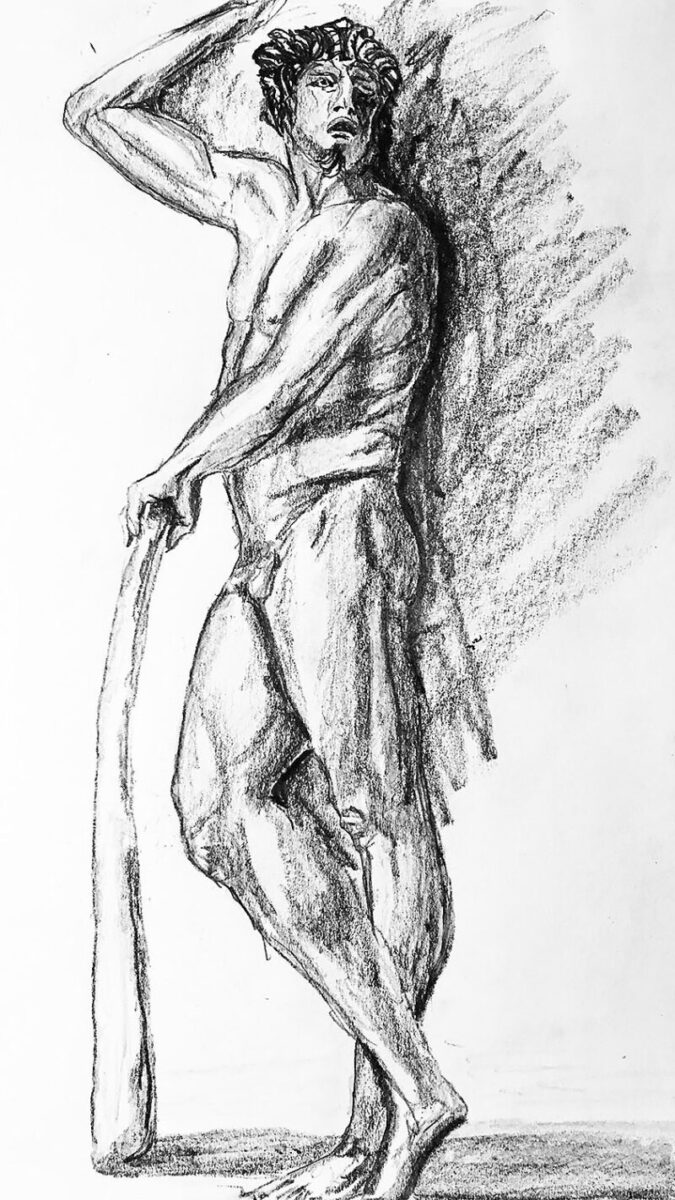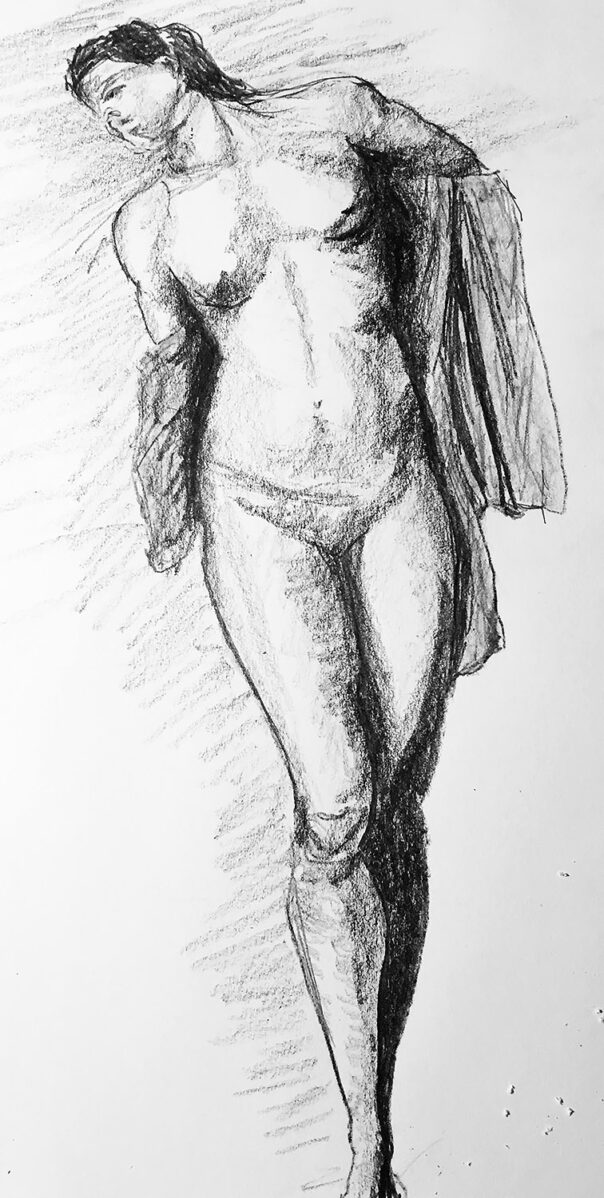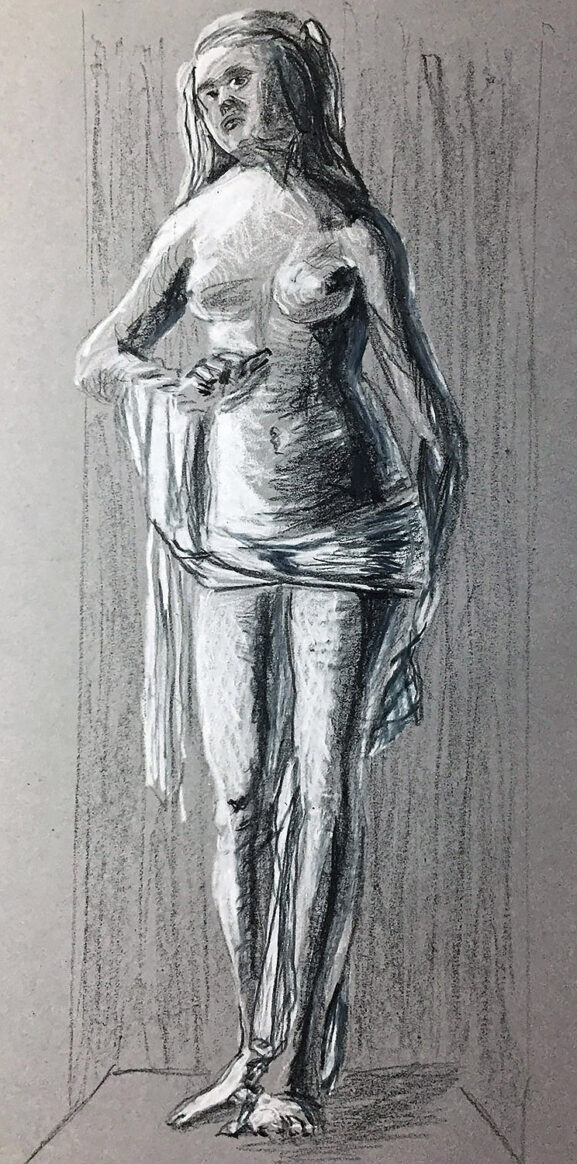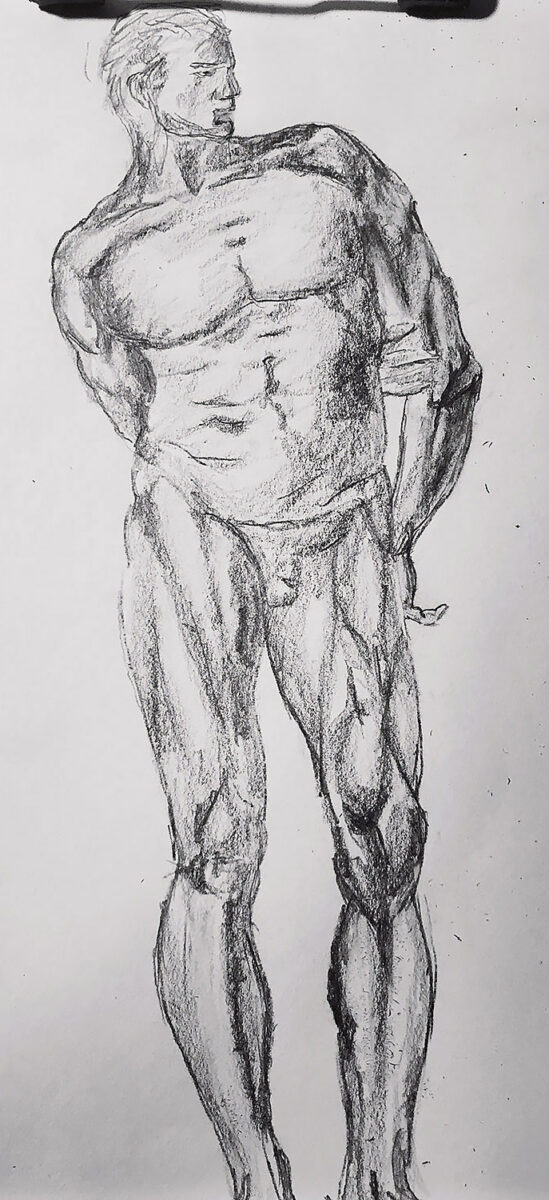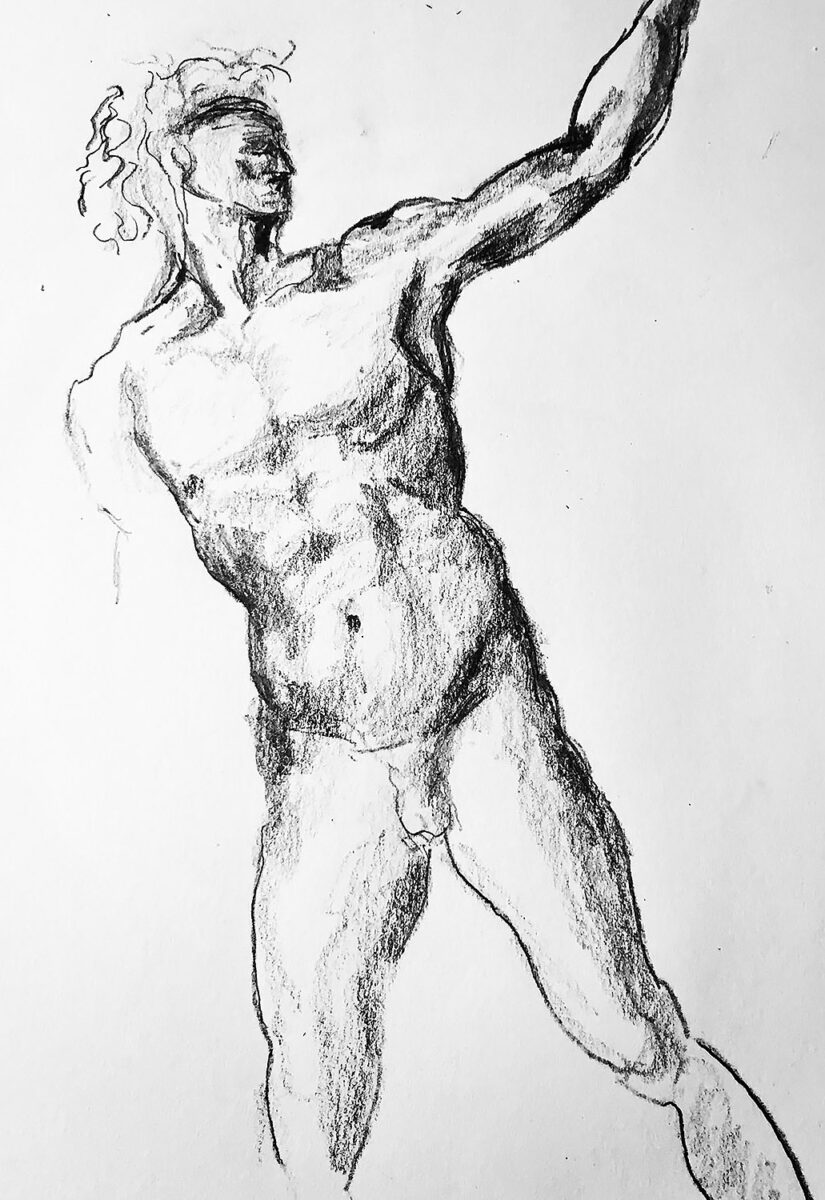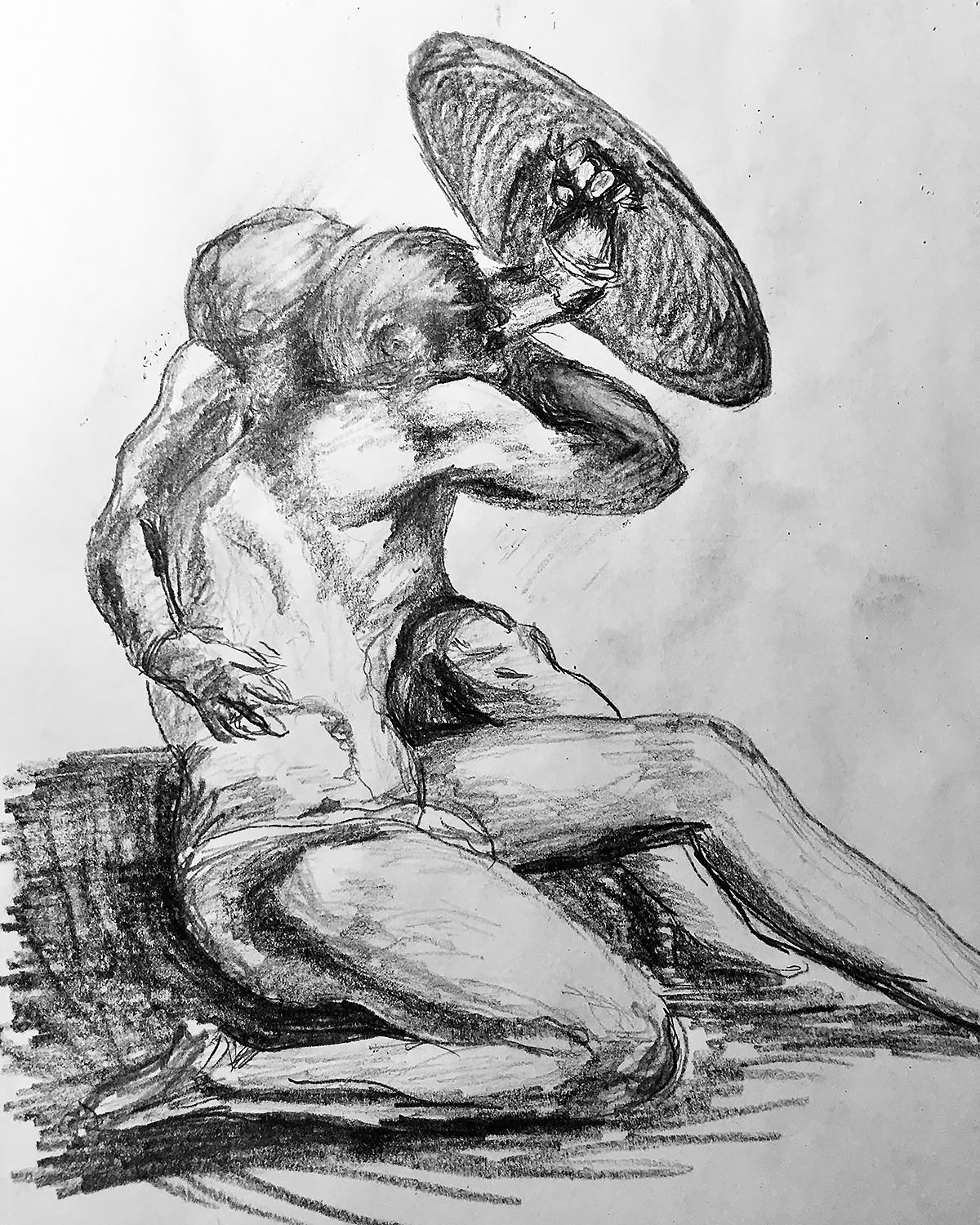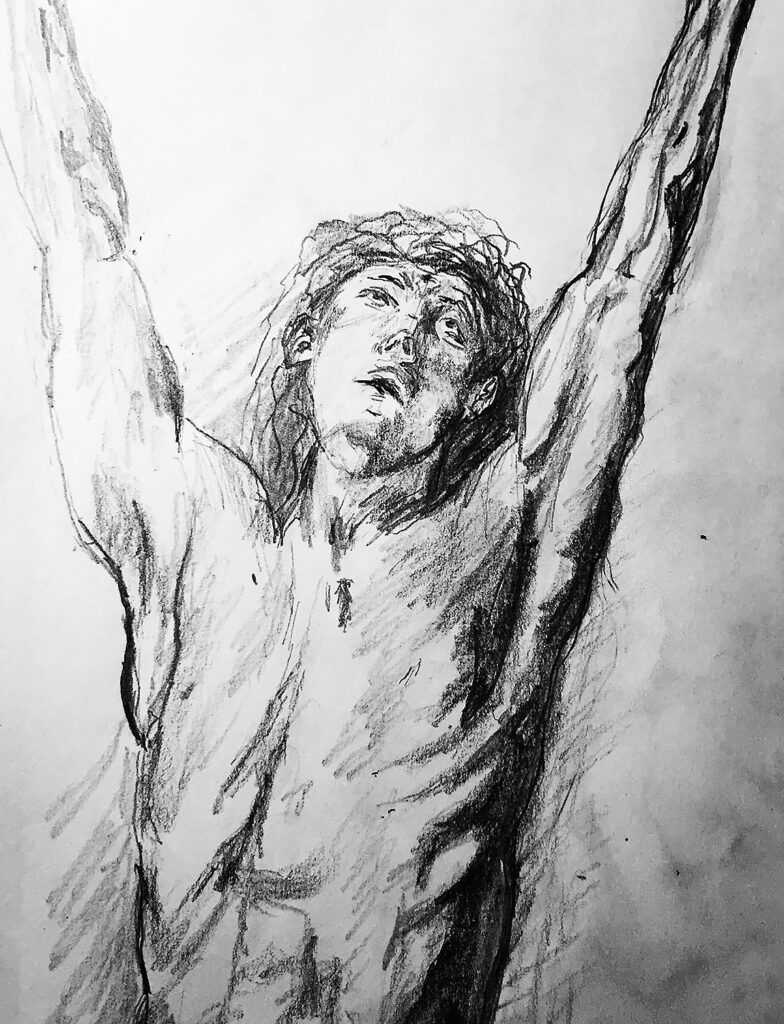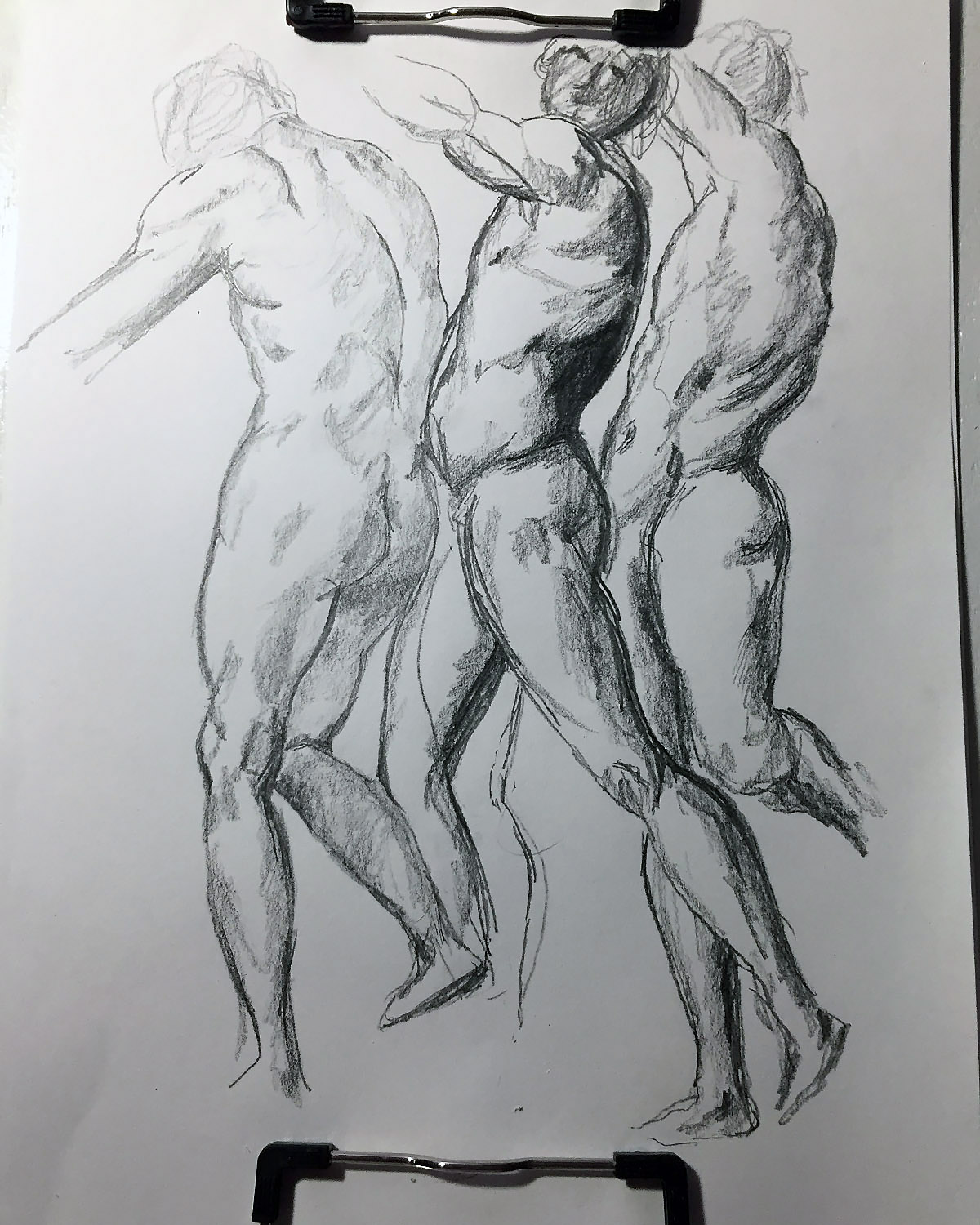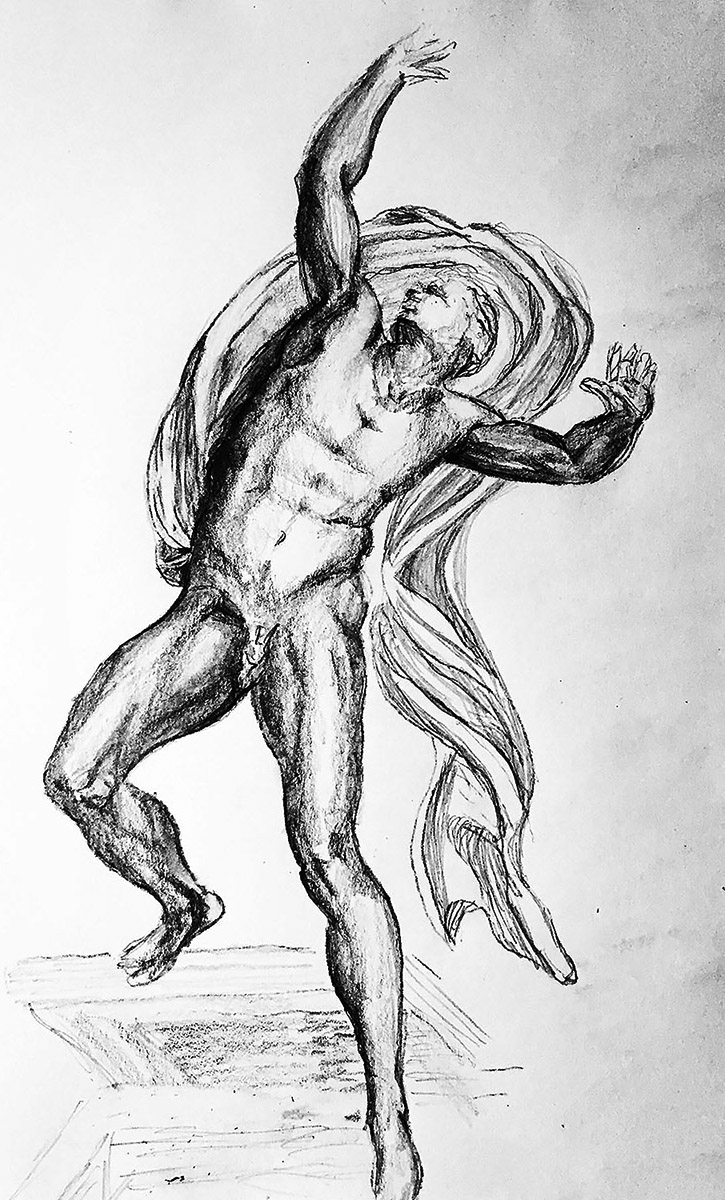
Here is a graphite pencil drawing after Michelangelo titled “The Risen Christ”. The original was drawn in black chalk around 1532. It is part of the Royal Collection Trust in the United Kingdom. There are over one million articles in the collection which includes 150,000 works on paper. Apparently, it is all owned by Queen Elizabeth II. Most of the old master drawings where acquired by King George III. The original drawing might have been done as a finished work of art rather than a preparatory sketch. I would assume it is not to hard to find this drawing by Michelangelo in the Royal Collection. Because of it’s importance it must be on display in a conspicuous place. I would hate to think that is hidden in a large pile of 150,000 pieces of paper. But then again if the Queen owns so many items then she just might be a hoarder. In that case there might be several large cardboard boxes of drawings jammed into the Royal garage or perhaps stored up in the Buckingham Palace attic.
“I would hate to think that is hidden in a large pile of 150,000 pieces of paper.”
Moving on, I came across an interesting quote by Michelangelo regarding drawing. “The science of design, or of line-drawing, is the source and very essence of painting, sculpture, architecture. Sometimes it seems that all the works of the human brain and hand are either design itself or a branch of that art.” He also said “Draw, Antonio; draw, Antonio; draw and don’t waste time.” So as you can see, drawing is very important. I would assume that it is important for many people and not just Antonio. But the fact that he singled out Antonio means that drawing is even more important for Antonio. Unfortunately Michelangelo destroyed a lot of his drawings so others wouldn’t see how he developed his work. Here are a couple of more quotes to ponder “If you knew how much work went into it, you wouldn’t call it genius.” And “If people knew how hard I worked to get my mastery, it wouldn’t seem so wonderful at all.”

